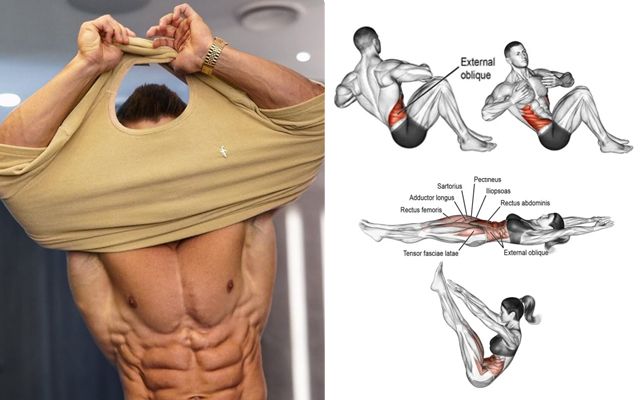The ab wheel, a seemingly simple piece of fitness equipment, has gained immense popularity among fitness enthusiasts for its ability to deliver a powerful core workout. But with its growing use, a common question arises: Can you use the ab wheel every day?
In this article, we’ll delve into the benefits and potential risks of daily ab wheel exercises, explore proper techniques, and provide expert insights to help you make an informed decision. Whether you’re a beginner looking to strengthen your core or an advanced athlete aiming to enhance your workout routine, understanding the impact of daily ab wheel use is crucial for achieving your fitness goals safely and effectively.
Introduction to the Ab Wheel

An ab wheel consists of a small wheel with handles on either side. It is used by rolling the wheel forward and backward while maintaining a plank position, which engages the core muscles intensely.
The ab wheel has been around since the 1970s, but it gained significant popularity in the late 1980s and 1990s. Invented by fitness expert Vince Del Monte, the ab wheel was designed to provide a portable and affordable way to strengthen the core. Over the years, its design has been refined, but the basic concept remains the same. Today, it is widely used by both amateur fitness enthusiasts and professional athletes for its effectiveness in building core strength.
SHOP FOR THE AB WHEEL ON AMAZON
The ab wheel is favored for its ability to provide a comprehensive core workout. Unlike traditional crunches or sit-ups, the ab wheel engages multiple muscle groups simultaneously, including the rectus abdominis, obliques, and even the lower back and shoulders. This makes it an excellent tool for improving overall stability and balance.
Benefits of Using the Ab Wheel Daily
Using the ab wheel daily can offer a range of benefits for your core strength and overall fitness. Here are some key advantages:
- Enhanced Core Strength: The ab wheel targets the entire core, including the rectus abdominis, obliques, and lower back muscles. Daily use can lead to significant improvements in core strength and stability.
- Improved Posture: A strong core is essential for maintaining good posture. Regular ab wheel exercises can help strengthen the muscles that support your spine, reducing the risk of back pain and improving your overall posture.
- Increased Muscle Endurance: Performing ab wheel exercises daily can enhance muscle endurance, allowing your core muscles to perform better during other physical activities and workouts.
- Better Balance and Stability: The ab wheel challenges your balance and stability, helping to improve these aspects over time. This can be beneficial for various sports and daily activities that require coordination and control.
- Efficient Workout: The ab wheel provides an intense workout in a short amount of time. This makes it a convenient option for those with busy schedules who still want to achieve effective core training.
- Versatility: The ab wheel can be used in various ways to target different muscle groups. By incorporating different exercises and variations, you can keep your workouts interesting and challenging.
- Cost-Effective: Compared to other fitness equipment, the ab wheel is relatively inexpensive. It offers a cost-effective way to achieve a strong and toned core without the need for a gym membership or expensive equipment.
- Portable: The compact size of the ab wheel makes it easy to carry and store. You can take it with you wherever you go, ensuring you never miss a workout.
While using the ab wheel daily can provide these benefits, it’s important to listen to your body and avoid overtraining. Proper technique and form are crucial to prevent injury and maximize the effectiveness of your workouts. Incorporating rest days and complementary exercises can also help you achieve the best results.
Potential Risks of Daily Use
While the ab wheel can be a powerful tool for strengthening your core, using it daily comes with certain risks that should be carefully considered:
1. Lower Back Strain: One of the most common risks associated with the ab wheel is lower back strain. This can occur if the exercise is performed with improper form or if the core muscles are not strong enough to support the movement. Overextending during rollouts can place excessive pressure on the lower back, leading to discomfort or injury.
2. Neck and Shoulder Pressure: Using the ab wheel can also put strain on the neck and shoulders, especially if the user lacks proper technique or tries to compensate for weak core muscles. This can result in muscle tension and potential injury.
3. Overtraining and Muscle Fatigue: Performing ab wheel exercises every day without adequate rest can lead to overtraining and muscle fatigue. The core muscles, like any other muscle group, need time to recover and repair. Overuse can result in decreased performance and increased risk of injury.
4. Risk of Improper Form: Maintaining proper form is crucial when using the ab wheel. Incorrect technique, such as arching the back or not engaging the core properly, can negate the benefits of the exercise and increase the risk of injury. Beginners may find it challenging to maintain the correct form, which can lead to potential harm.
5. Not Suitable for Everyone: The ab wheel may not be suitable for individuals with pre-existing conditions such as lower back pain or shoulder issues. It’s important to consult with a healthcare professional or fitness expert before incorporating the ab wheel into a daily routine, especially if you have any underlying health concerns.
Tips to Mitigate Risks
- Proper Form and Technique: Always ensure you’re using the correct form to minimize the risk of injury. Consider consulting a fitness professional for guidance.
- Rest and Recovery: Incorporate rest days into your routine to allow your muscles to recover. This can prevent overtraining and reduce the risk of injury.
- Balanced Workout Routine: Include a variety of exercises in your fitness plan to target different muscle groups and prevent imbalances.
- Listen to Your Body: Pay attention to any signs of pain or fatigue. If something doesn’t feel right, take a break and reassess your workout routine.
SHOP FOR THE WORKOUT MAT ON AMAZON
By being aware of these potential risks and taking steps to mitigate them, you can safely enjoy the benefits of the ab wheel without compromising your health or fitness progress.
Proper Technique and Form
Using the ab wheel with proper technique and form is crucial to maximize its benefits and minimize the risk of injury. Here’s a step-by-step guide to help you perform ab wheel exercises correctly:

Step-by-Step Guide
1. Starting Position:
- Kneel on the floor with the ab wheel in front of you.
- Grasp the handles of the ab wheel with both hands, keeping your wrists straight.
- Position the ab wheel directly under your shoulders.
2. Engage Your Core:
- Tighten your abdominal muscles to engage your core.
- Keep your back straight and avoid arching or rounding your lower back.
3. Roll Out:
- Slowly roll the ab wheel forward, extending your arms and lowering your torso towards the floor.
- Maintain a straight line from your head to your knees (or toes if you’re performing a more advanced variation).
- Keep your core engaged and avoid letting your lower back sag.
4. Roll Back:
- Once you’ve reached your maximum range of motion (without compromising form), pause for a moment.
- Use your core muscles to pull the ab wheel back towards your knees, returning to the starting position.
- Keep your movements controlled and avoid using momentum.
Tips for Proper Form
- Start Small: If you’re new to the ab wheel, start with small movements and gradually increase the range of motion as you build strength and confidence.
- Knee Support: Beginners can perform the exercise from their knees to reduce the intensity. As you progress, you can try the full rollout from your toes.
- Breathing: Breathe in as you roll out and breathe out as you roll back. Proper breathing helps maintain stability and control.
- Avoid Overextension: Don’t roll out too far, especially if you’re a beginner. Overextending can strain your lower back and increase the risk of injury.
- Consistent Practice: Consistency is key. Practice regularly to improve your form and build core strength over time.
Common Mistakes to Avoid
- Arching the Lower Back: Allowing your lower back to arch during the rollout can put excessive strain on your spine and lead to injury. Always keep your core engaged and maintain a neutral spine.
- Using Momentum: Relying on momentum to roll back instead of using your core muscles can reduce the effectiveness of the exercise and increase the risk of injury. Focus on controlled movements and let your core do the work.
- Holding Your Breath: Holding your breath during the exercise can increase tension and reduce stability. Remember to breathe steadily throughout the movement—inhale as you roll out and exhale as you roll back.
- Overextending: Rolling out too far, especially if you’re a beginner, can strain your lower back and increase the risk of injury. Start with a smaller range of motion and gradually increase it as you build strength.
- Incorrect Hand Placement: Placing your hands too close together or too far apart on the ab wheel handles can affect your balance and form. Ensure your hands are positioned shoulder-width apart for optimal stability.
- Neglecting Warm-Up and Cool-Down: Skipping warm-up and cool-down routines can increase the risk of injury and reduce the effectiveness of your workout. Always start with a proper warm-up and end with a cool-down to prepare your muscles and aid recovery.
SHOP FOR THE RESISTANCE BAND ON AMAZON
By following these steps and tips, you can perform ab wheel exercises safely and effectively, reaping the full benefits of this powerful core workout tool.
Sample Workout Routines
Here are some ab wheel workout routines ranging from beginner to advanced levels. Each routine includes different exercises and variations to accommodate various fitness levels:
Beginner Ab Wheel Routine
1. Basic Rollouts
- Instructions: Start on your knees with the ab wheel in front of you. Grip the handles, and slowly roll the wheel forward, extending your body as far as comfortable. Return to the starting position.
- Reps: 8-10
- Sets: 2-3
2. Wall Rollouts
- Instructions: Perform the basic rollout but with a wall in front of you. Roll the wheel towards the wall until it lightly touches, then roll back. This provides extra support and limits the range of motion.
- Reps: 8-10
- Sets: 2-3
3. Modified Rollouts
- Instructions: Start in a tabletop position (hands and knees). Roll the wheel forward slightly, then return to the starting position. This reduces the intensity and provides a more controlled movement.
- Reps: 8-10
- Sets: 2-3
Intermediate Ab Wheel Routine
1. Standard Rollouts
- Instructions: Perform the rollouts from a kneeling position, extending as far as you can without touching the floor with your body.
- Reps: 10-12
- Sets: 3-4
2. Kneeling Rollouts with Pause
- Instructions: Roll the wheel forward, hold the extended position for a moment, then return. This increases time under tension.
- Reps: 8-10
- Sets: 3-4
3. Side-to-Side Rollouts
- Instructions: Roll the wheel diagonally to the left and then to the right in a single motion, engaging your obliques.
- Reps: 8-10 per side
- Sets: 3-4
4. Pike Rollouts
- Instructions: Start in a high plank position, roll the wheel forward, then pull your hips up towards the ceiling, creating a pike position. Return to the plank.
- Reps: 8-10
- Sets: 3-4
Advanced Ab Wheel Routine
1. Standing Rollouts
- Instructions: Stand with feet shoulder-width apart, holding the ab wheel in front of you. Roll the wheel forward as far as you can, then pull back to the starting position. This requires significant core strength and balance.
- Reps: 8-10
- Sets: 4-5
2. Rollouts with Feet Elevated
- Instructions: Perform standard rollouts with your feet elevated on a bench or stability ball. This increases the intensity and engages your core more deeply.
- Reps: 8-10
- Sets: 4-5
3. Single-Leg Rollouts
- Instructions: While performing a standard rollout, lift one leg off the ground, alternating legs with each set. This adds an additional balance challenge.
- Reps: 8-10 per leg
- Sets: 4-5
4. Rollouts to Plank
- Instructions: Roll the wheel forward into a plank position, hold for a moment, then roll back to the starting position. This combines the rollout with a static plank hold.
- Reps: 8-10
- Sets: 4-5
5. V-Sits with Rollout
- Instructions: Start in a seated position with legs extended and roll the wheel forward while leaning back into a V-sit position, then return to the starting position.
- Reps: 8-10
- Sets: 4-5
SHOP FOR THE STABILITY BALL ON AMAZON
Feel free to adjust the number of sets and reps based on your fitness level and goals. Always remember to perform each exercise with proper form to avoid injury and maximize effectiveness.
Alternatives and Complementary Exercises
Incorporating alternatives and complementary exercises can help balance your fitness routine and reduce the risk of overuse injuries. Here’s a breakdown of some effective exercises to pair with the ab wheel:
1. Planks

- Benefits: Strengthens the entire core, including the abs, obliques, and lower back.
- How to Do It: Hold a push-up position with your body in a straight line from head to heels. Keep your core tight and avoid letting your hips sag.
- Variations: Side planks, forearm planks, and plank with leg lifts.
2. Dead Bugs
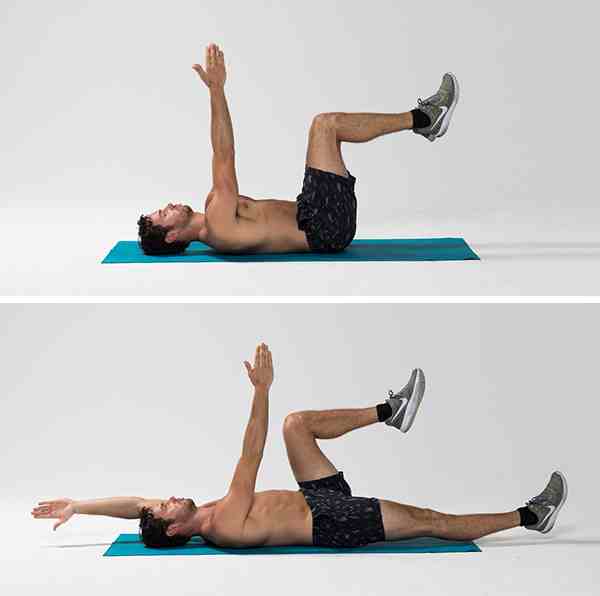
Benefits of L-glutamine for Bodybuilders
- Benefits: Enhances core stability and coordination.
- How to Do It: Lie on your back with arms extended towards the ceiling and knees bent at 90 degrees. Slowly lower your right arm and left leg towards the floor while keeping your back flat. Return to the starting position and repeat on the other side.
3. Russian Twists

- Benefits: Targets the oblique muscles and improves rotational strength.
- How to Do It: Sit on the floor with knees bent and feet lifted slightly. Lean back slightly and twist your torso to the right, then to the left, while holding a weight or medicine ball.
4. Hanging Leg Raises
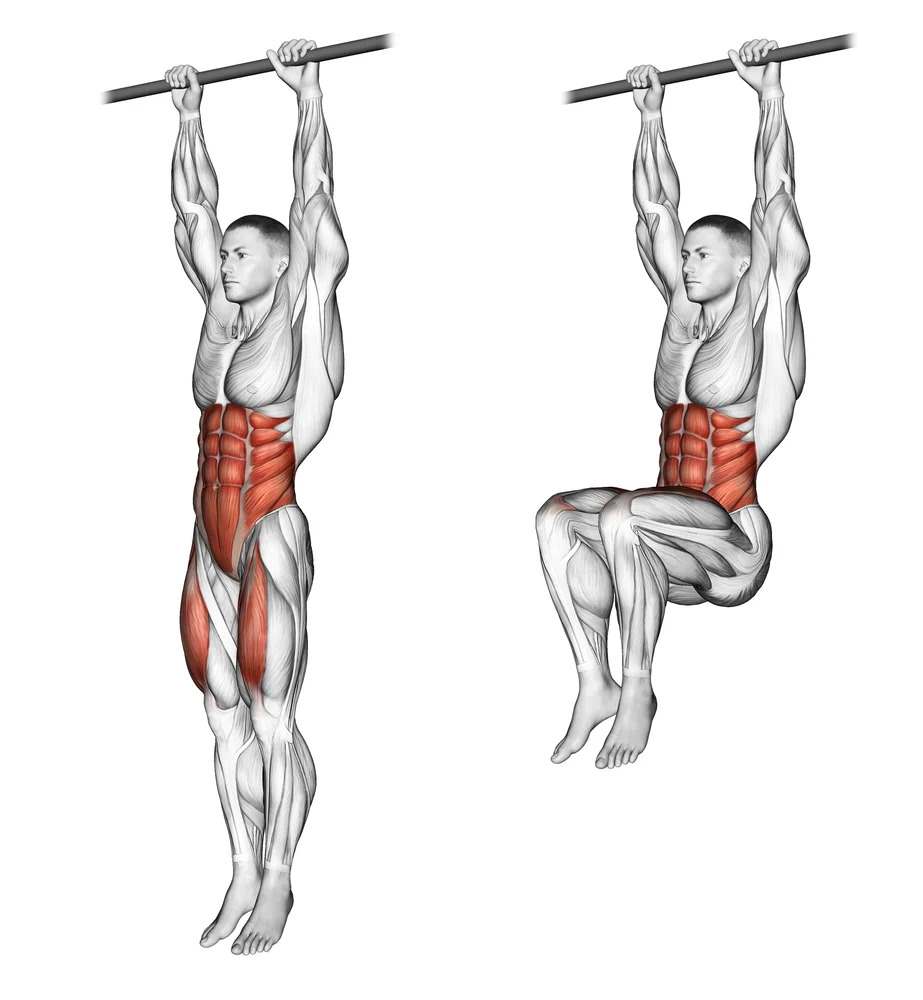
- Benefits: Focuses on the lower abs and hip flexors.
- How to Do It: Hang from a pull-up bar with arms fully extended. Engage your core and raise your legs until they’re parallel to the ground, then lower them back down.
5. Bicycle Crunches
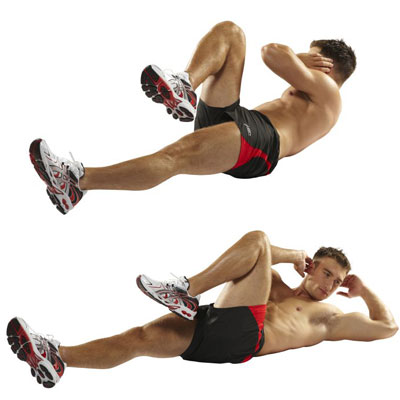
- Benefits: Targets the entire abdominal area and obliques.
- How to Do It: Lie on your back with hands behind your head and legs lifted in a tabletop position. Alternate bringing your right elbow towards your left knee while extending the right leg, then switch sides.
6. Flutter Kicks
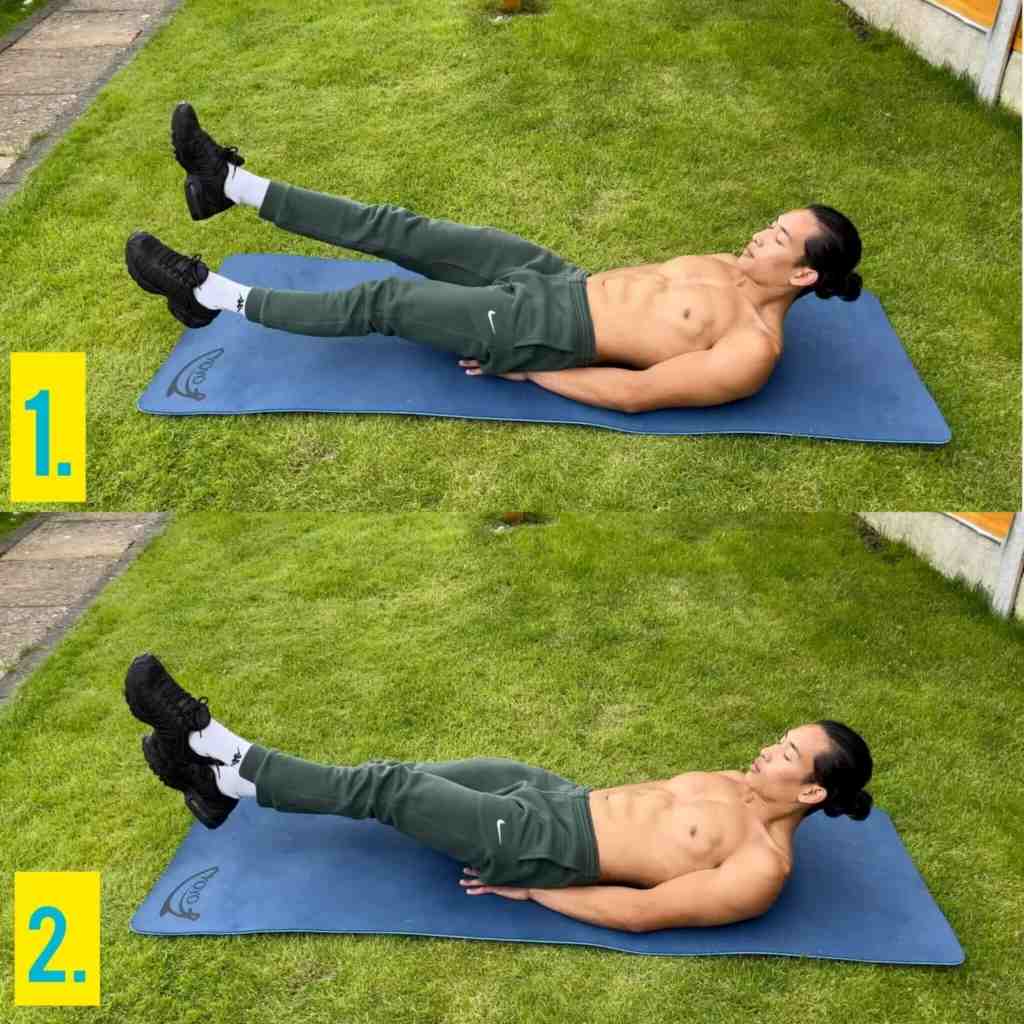
- Benefits: Builds endurance in the lower abs and hip flexors.
- How to Do It: Lie on your back with legs extended and hands under your hips. Lift your legs slightly off the ground and perform a fluttering motion by alternately kicking your legs up and down.
Benefits of Bodyweight Exercises
7. Mountain Climbers
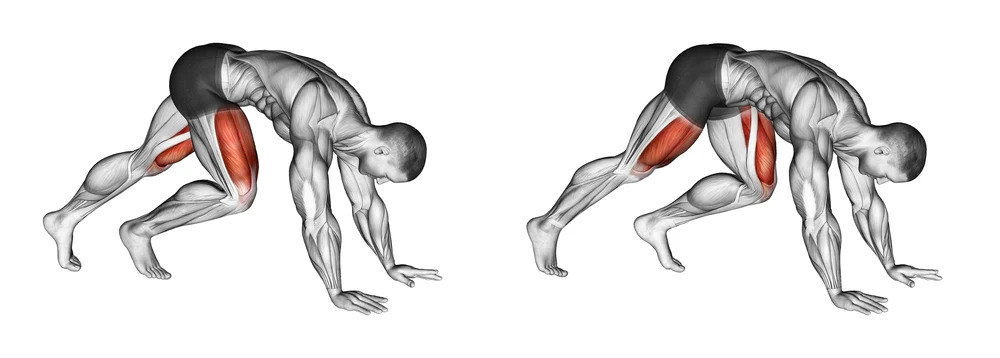
- Benefits: Engages the core while providing a cardiovascular challenge.
- How to Do It: Start in a high plank position. Bring one knee towards your chest, then quickly switch to the other knee, mimicking a running motion.
8. Reverse Crunches

- Benefits: Focuses on the lower abs.
- How to Do It: Lie on your back with your knees bent and feet off the ground. Use your lower abs to lift your hips off the floor and towards your chest, then lower them back down.
9. Ab Roll-Outs
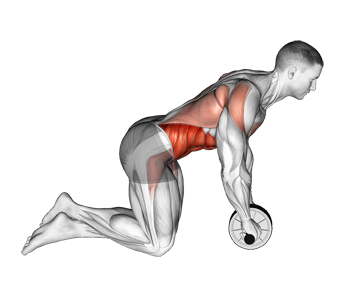
- Benefits: Similar to the ab wheel but can be done with a barbell or a stability ball.
- How to Do It: Kneel on the ground with a barbell or stability ball in front of you. Roll the barbell or ball forward while extending your body, then roll it back to the starting position.
10. Leg Raises on an Incline Bench
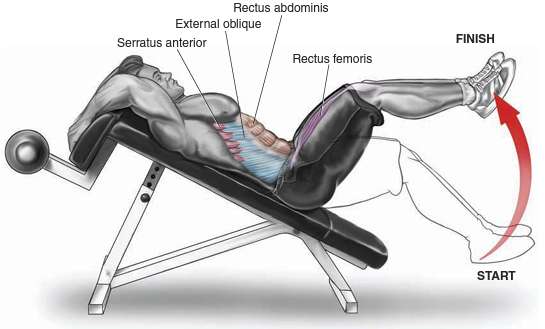
- Benefits: Targets the lower abs with added resistance.
- How to Do It: Lie on an incline bench with your legs hanging off the edge. Raise your legs to a 90-degree angle and lower them slowly.
Equipment-Free Oblique Exercises
By incorporating these exercises into your routine, you can ensure a well-rounded core workout while minimizing the risk of overuse injuries from daily ab wheel use.
FAQs
Q 1. Can beginners use the ab wheel every day?
Ans. Beginners should start with less frequent use to build strength and ensure proper form before considering daily use. It’s important to listen to your body and avoid overtraining.
Q 2. How long should I use the ab wheel each day?
Ans. For most people, 5-10 minutes of ab wheel exercises per session is sufficient. Quality and proper form are more important than duration.
Q 3. Can the ab wheel help with weight loss?
Ans. While the ab wheel primarily strengthens and tones the core, it can contribute to overall calorie burn when combined with a balanced diet and other forms of exercise.
Q 4. Is it normal to feel sore after using the ab wheel?
Ans. Yes, it’s common to feel sore, especially if you’re new to the exercise. This soreness should decrease as your muscles adapt and strengthen.
Q 5. Can I use the ab wheel if I have lower back pain?
Ans. If you have lower back pain, it’s best to consult with a healthcare professional before using the ab wheel. They can guide whether it’s safe for you and suggest modifications if necessary.
Q 6. How do I know if I’m using the ab wheel correctly?
Ans. Proper form includes keeping your back straight, engaging your core, and avoiding arching your back. If you’re unsure, consider seeking advice from a fitness professional or watching instructional videos.
Q 7. What are some alternative exercises to the ab wheel?
Ans. Alternatives include planks, mountain climbers, and leg raises. These exercises also target the core and can be used to vary your workout routine.
Q 8. Can I combine ab wheel exercises with other workouts?
Ans. Absolutely! The ab wheel can be integrated into a full-body workout routine. Combining it with exercises like push-ups, squats, and cardio can enhance overall fitness.
Q 9. How often should I rest when using the ab wheel daily?
Ans. Even if you use the ab wheel daily, it’s important to incorporate rest days to allow your muscles to recover. Consider alternating between intense and lighter workout days.
Q 10. Are there any specific warm-up exercises recommended before using the ab wheel?
Ans. Dynamic stretches and light cardio, such as jumping jacks or brisk walking, are good warm-up exercises to prepare your muscles for the ab wheel workout.
Conclusion
In conclusion, while the ab wheel is a powerful tool for building core strength and stability, using it daily may not be the best approach for everyone. Daily use can lead to overtraining, muscle strain, and even injury if not done with proper form and attention to recovery. It’s essential to listen to your body, recognize the signs of overuse, and allow adequate rest between workouts to ensure optimal results and prevent injury.
Incorporating a variety of core exercises and balancing your workout routine can help you achieve your fitness goals without overloading your muscles. Remember, effective training is about consistency, variety, and listening to what your body needs. By doing so, you can enjoy the benefits of the ab wheel while maintaining a safe and sustainable fitness regimen.

Good day, and welcome to Fitthour. My name is Shubham Vijay, and I am a certified personal trainer and nutrition coach with 6 years of experience in the fitness industry. At Fitthour, we specialize in types of training, such as strength training, cardio, or HIIT, and our mission is to help clients achieve their fitness goals and improve their overall health.

